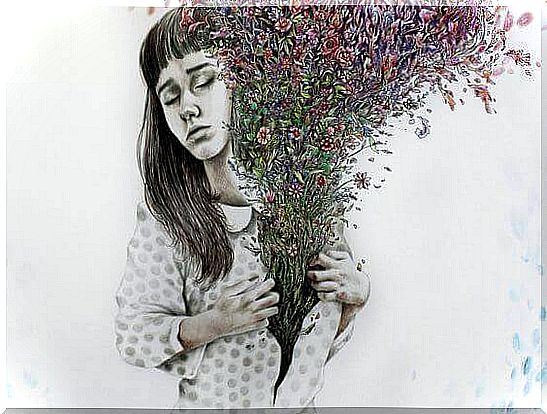To Identify With His Abuser

We will always be hurt in our relationships with other people. A misunderstanding, an unusual situation or a lack of tolerance can lead to conflict. But there are also situations where aggression and violence go too far and we have to get away from those who harm us.
The phrase “to identify with his abuser” comes from Sandor Ferenczi and was picked up by Anna Freud. Both are psychoanalysts but with somewhat different views on the issue. It is a paradoxical form of behavior that can best be explained as a defense mechanism that causes the victim of an abuse to start behaving like his or her abuser.
Even in situations of fear and isolation, the victim’s attitude towards the abuser can become pathological, and feelings such as admiration, gratitude and identification can develop.
A typical example of identification with an abuser is the behavior of some Jews in the Nazi concentration camps. Some of the prisoners began to behave in the same way as the guards and abused other prisoners. This form of behavior can not only be dismissed as an easy way to try to “impress” their abusers.
When you admire or love the people who hurt you
A classic example of identification with the abuser is the Stockholm Syndrome. This term is used of the victim of kidnapping who establishes an emotional bond with his kidnapper.
This syndrome is also called a “bond of fear” or a “traumatic bond”. It is used to describe victims who have a favorable attitude and feelings towards their abuser, and negative attitudes to what goes against the will and intentions of their abuser.

When someone experiences being in the grace of an abuser, they feel both fear and anxiety, which can lead to a childish regression. This regression is experienced as a form of gratitude to the abuser as they look at someone who takes care of their needs. Thus, the victim also returns to being a child.
It is the abuser who gives them food, lets them go to the toilet, etc. In response to this “generosity”, the victim feels nothing but gratitude to his abuser because he lets them live. They forget that it is the same person who is the cause of their suffering.
The abuser’s most common practice is to intimidate his victim when he is in a defenseless state. That is, the abuser abuses the victim when he or she is vulnerable. At this point, the victim is terrified and has difficulty protecting himself from injury. The behavior we are discussing here arises because the victim is convinced that they will have a greater chance of surviving if they submit to themselves.
The emotional connection
The emotional attachment a victim of abuse has over their abuser is really a survival strategy. When the relationship between victim and abuser is understood, it is easier to understand how victims can defend, support and even love their abusers.
The truth is that these types of situations do not only occur with kidnappings. You can see the same defense mechanism in many, and unfortunately far more common situations, as violent conditions.
Many refuse to report, and some even pay bail for their boyfriends and husbands, even though they have been physically and mentally abused by them. They can even quarrel with and get in the way of police when they try to save them from violent situations.

There are certain conditions that promote identification with the abuser; such as domestic violence or harassment in the workplace. This mechanism can also be activated in more random episodes of violence such as assault or rape. But no matter what the case, life can become unbearable if this problem is not solved.
Trauma that comes from experiences of violence leaves deep traces in the heart. This is why the mechanism we call identification with the abuser is activated, even when there is basically no close relationship with the abuser.
What happens is that they fear the abuser so much that they end up imitating them. This is to compensate for the fear a possible confrontation produces. An example of this is when a victim of armed assault buys a pistol to defend himself. This attitude defends their use of the kind of violence they themselves have been subjected to.
From victim to abuser
Victims of abuse have a risk of becoming abusers themselves. This happens when the victim struggles to understand what has happened to them, but is unable to do so. It is as if their personality is eroded in confusion, which in turn creates a void. A void that is slowly filled with the characteristics of the abuser and that ends up becoming identification with the abuser.
It is important to understand that this whole process develops unconsciously. It’s like an actor who gets so engrossed in the character he plays that he ends up becoming the character himself. The victim thinks that if they adopt the characteristics of the abuser, then they can neutralize him or her. They become so obsessed with this goal that they try again and again. As a result of these dynamics, they end up resembling their abuser.

This leads to a chain reaction that ends in a vicious circle of violence. A boss is violent with an employee, the employee is violent with his wife, the wife is violent with her children, the children are violent towards the dog and the dog ends up biting the boss. Or when one ethnic group uses violence against another, who then feels that they have the right to expose their perpetrators to the same violence. They think they are just responding to the violence, when in fact they are imitating a behavior they are actually rejecting.
Unfortunately, a large proportion of people who have experienced traumatic situations and who are unable to overcome the problem or seek help, will be able to reproduce the same trauma in other people. For some, this may seem like an obvious consequence, while for others it may seem contradictory, but that’s just the way it is.








